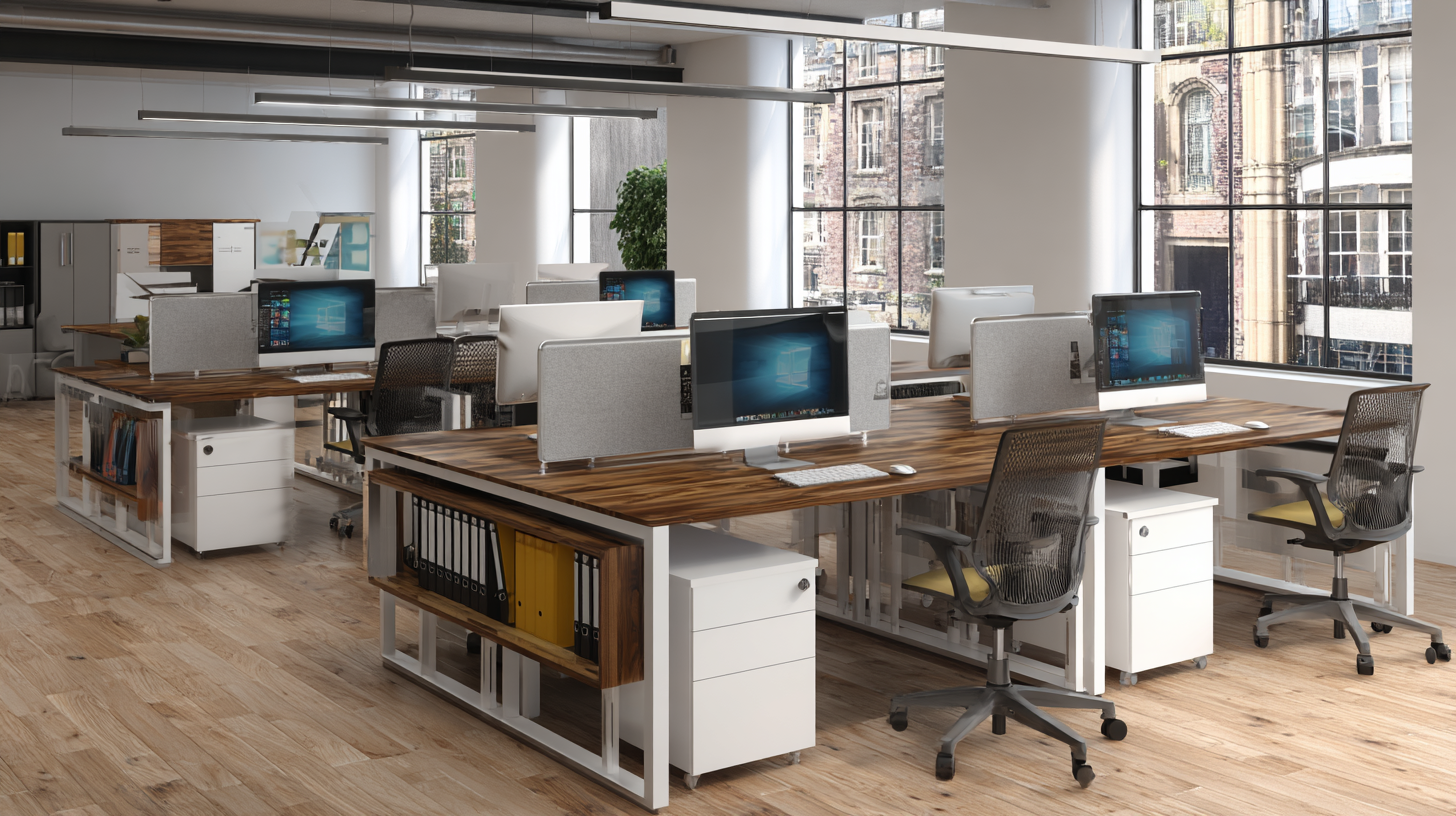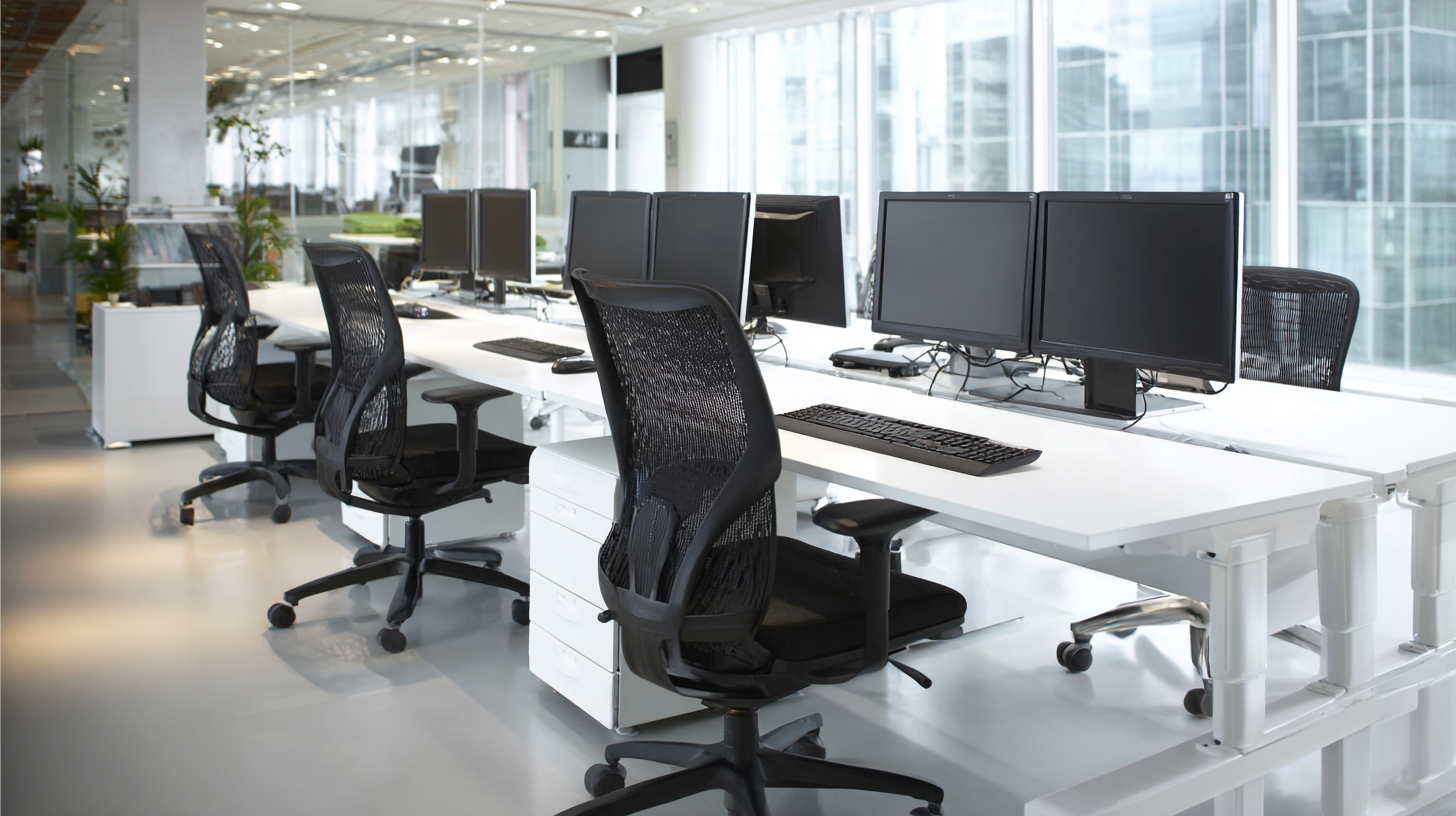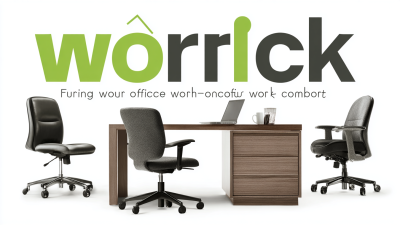Largest Selection of New and Used Office Furniture! Call 1-855-885-3375 or visit a showroom today!
Blog
The Ultimate Guide to Ergonomic Office Desks and Chairs for a Healthier Workspace
In recent years, the importance of ergonomic office desks and chairs has gained significant attention as more individuals and organizations recognize the impact of workplace design on employee health and productivity. According to a report from the World Health Organization, musculoskeletal disorders, often linked to improper seating and workspace setup, affect over 1.7 billion people worldwide, leading to increased absenteeism and healthcare costs. Furthermore, the Human Factors and Ergonomics Society emphasizes that a well-designed ergonomic workspace can enhance productivity by up to 10%, demonstrating the necessity for investing in quality office desks and chairs. As remote and hybrid work models become the norm, understanding the benefits and features of ergonomic furniture is essential for creating a healthier workspace that promotes well-being and efficiency.

This guide provides comprehensive insights into selecting the best ergonomic office desks and chairs, ensuring that individuals can work comfortably and sustainably.
Understanding Ergonomic Design Principles for Office Furniture
 Ergonomic design principles are crucial for creating a workspace that promotes health and productivity. At the heart of ergonomic design is the concept of aligning furniture with the natural movements and postures of the human body. Office chairs, for example, should not only provide adequate lumbar support but also allow for adjustments in height and armrests to accommodate diverse body types. A well-designed chair encourages proper posture, reducing strain on the back and neck, which can alleviate chronic pain and discomfort.
Ergonomic design principles are crucial for creating a workspace that promotes health and productivity. At the heart of ergonomic design is the concept of aligning furniture with the natural movements and postures of the human body. Office chairs, for example, should not only provide adequate lumbar support but also allow for adjustments in height and armrests to accommodate diverse body types. A well-designed chair encourages proper posture, reducing strain on the back and neck, which can alleviate chronic pain and discomfort.
Similarly, an ergonomic office desk should facilitate an optimal working position. This includes a desk height that allows elbows to remain at a 90-degree angle while typing, and sufficient space for both the keyboard and monitor. The placement of the screen is also critical; it should be at eye level to minimize neck strain. Incorporating features such as sit-stand options can further enhance ergonomics by allowing the user to alternate between sitting and standing, promoting movement throughout the day. In understanding and applying these ergonomic design principles, individuals can create healthier workspaces that enhance comfort and overall well-being.
Key Features to Look for in Ergonomic Office Desks
When selecting ergonomic office desks, several key features should be prioritized to promote a healthier workspace. One critical aspect is adjustability. Research by the American National Standards Institute indicates that workplaces accommodating a variety of body types and preferences can enhance productivity by 15%. Adjustable desks allow users to switch between sitting and standing positions throughout the day, reducing the risks associated with prolonged sitting, such as obesity and cardiovascular diseases.
Another essential feature is the desk height. According to a study published in the Journal of Occupational Health, improperly sized desks can lead to musculoskeletal disorders, which are prevalent among office workers. A desk with a height range that accommodates the 5th to 95th percentile of users can significantly alleviate discomfort. It’s also important to consider the surface area; a desk that offers ample space for monitors and essential tools supports a clutter-free environment that can enhance focus and efficiency. By prioritizing these ergonomic features, businesses can foster a healthier, more productive workspace.
Choosing the Right Ergonomic Chair for Your Body Type
When selecting the right ergonomic chair for your body type, it's essential to consider a few key factors that contribute to comfort and support during long hours of work. Not all chairs are created equal; your needs may vary based on your height, weight, and any specific conditions like back pain. A chair that provides ample lumbar support and is adjustable can make a significant difference in your workspace health.
**Tips:** First, test the chair's height adjustment; your feet should rest flat on the ground. Next, look for wider seats with ample cushioning that won’t compress over time. Using chairs with adjustable armrests can help minimize shoulder strain. Additionally, consider a model that allows for seat depth adjustment, which accommodates different leg lengths, ensuring better posture alignment.
Experts highlight that materials matter too; breathable fabrics help regulate temperature, ensuring comfort throughout long hours. With numerous options available, it's beneficial to prioritize ergonomics over aesthetics to foster a healthy, productive workspace. Spending time in a chair that aligns well with your body can help prevent discomfort and promote better focus on your tasks.
The Ultimate Guide to Ergonomic Office Desks and Chairs for a Healthier Workspace - Choosing the Right Ergonomic Chair for Your Body Type
| Body Type | Recommended Chair Features | Height Adjustment Range (inches) | Weight Capacity (lbs) | Price Range ($) |
|---|---|---|---|---|
| Petite (5'0" - 5'4") | Seat height adjustment, lumbar support, compact design | 15 - 19 | 220 | 150 - 400 |
| Average (5'5" - 5'9") | Padded seat, adjustable armrests, backrest tilt | 16 - 20 | 300 | 200 - 600 |
| Tall (5'10" - 6'2") | High backrest, extended seat depth, adjustable headrest | 18 - 22 | 350 | 250 - 700 |
| Plus Size (Over 6'2" or 300+ lbs) | Wide seat, reinforced base, heavy-duty construction | 20 - 24 | 500 | 300 - 1000 |
Adjustability and Customization: Making Your Workspace Fit You
When it comes to creating a healthier workspace, adjustability and customization play a crucial role in ensuring that your ergonomic office desk and chair meet your individual needs. The ability to modify these elements according to your body dimensions can significantly enhance comfort and productivity. For instance, ergonomic chairs should offer adjustable seat heights, lumbar support, and armrests, allowing users to maintain a natural posture while working. Similarly, desks that can be height-adjusted facilitate a seamless transition between sitting and standing, reducing the risk of strain and fatigue during long hours of work.
Furthermore, customization goes beyond simple adjustments; it involves personalizing the workspace to reflect individual work styles and preferences. Accessories such as keyboard trays and monitor risers can further optimize ergonomics. By setting up your office equipment in a way that promotes a neutral body position, you not only enhance physical comfort but also contribute to mental clarity and focus. Thus, investing time in tailoring your workspace with adjustable and customizable elements is a key step toward fostering a healthier and more efficient work environment.

The Benefits of Investing in Ergonomic Office Solutions for Health
Investing in ergonomic office solutions is not just a trend; it’s a necessity for promoting overall health and well-being in the workplace. According to a report by the Occupational Safety and Health Administration (OSHA), employing ergonomic practices can reduce musculoskeletal disorders (MSDs) by up to 50%. These conditions not only affect employees' health but also result in significant costs for employers, with lost productivity and medical fees amounting to billions annually. By integrating ergonomic chairs and desks, companies can create a healthier work environment, leading to increased employee satisfaction and reduced absenteeism.
Furthermore, a study conducted by the American Chiropractic Association highlights that over 80% of office workers experience back pain due to poor posture and inadequate workstation setup. Ergonomic chairs that support the natural curvature of the spine and height-adjustable desks that allow for both sitting and standing work can help alleviate these issues. Implementing these solutions fosters not just comfort but also productivity. A separate survey indicated that employees using ergonomic furniture reported a 25% increase in productivity, demonstrating that investing in ergonomic office solutions yields significant returns for both employees and the organization as a whole.
The Impact of Ergonomic Office Furniture on Employee Health
Related Posts
-

Elevate Your Workspace: The Impact of Ergonomic Office Desks and Chairs on Productivity and Health
-

Unlocking Comfort and Productivity with the Best Office Chairs Specifications and Setup Guide
-

2025 Trends in Small Office Tables and Chairs and How to Choose the Perfect Set
-

15 Best Office Supplies Chairs for Ultimate Comfort and Productivity
-

Premium Manufacturing Excellence from China for the Best Desk and Chair Solutions
-

Finding the Right Manufacturer for Premium Office Chairs to Enhance Workplace Comfort
